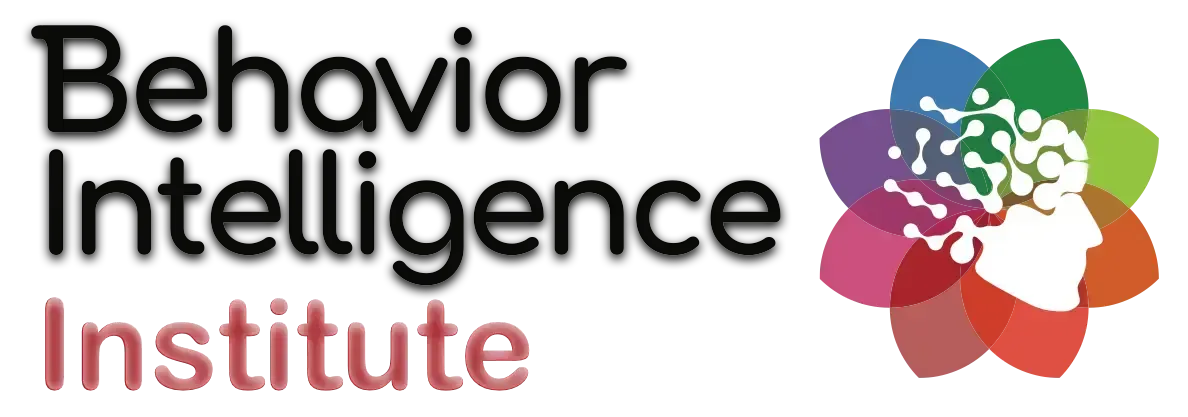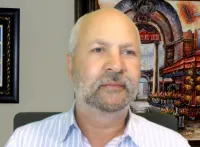Blog
Categories

Your Leadership Blindspots: What You Can't See Is Holding You Back
Over the years, I’ve seen brilliant leaders hit walls—not because of a lack of strategy, skill, or desire—but because of one invisible obstacle:
They can’t see what’s holding them back.
These blind spots are sneaky. They show up in our habits, our reactions, our language—even in the silence of a disengaged meeting room. And yet, we don’t see them because we’re looking through our own lens.
That’s the trap.
We think we’re leading with clarity, but we’re actually operating in the dark.
This blog is here to change that. Below, I’ll walk you through the core framework of Leadership Intelligence, why traditional self-awareness is failing us, and the exact daily practice that will help you recognize what you’ve never seen before—and evolve into the kind of leader others want to follow.

Why Self-Awareness Isn’t Enough Anymore
Let me say this clearly: self-awareness alone won’t get you there.
Most leaders believe they’re self-aware. In fact, up to 95% of them say they are. But research and experience show that only a fraction actually are.
Why? Because they define self-awareness by looking inward:
“I know my strengths.”
“I understand how I prefer to work.”
“I’m aware of my personality profile.”
But leadership isn’t about what you experience—it’s about how others experience you.
True self-awareness must include external feedback, behavioral patterns, and the ability to predict how you affect outcomes.

The Leadership Intelligence Framework
Leadership Intelligence is a structured way to build self-mastery—not by guessing, but through repeatable processes grounded in Behavior Intelligence™.
It comes down to three key levels:
1. Pattern Recognition
Notice what you do as you do it. Start catching yourself in the moment, not just after the fact.
2. Impact Awareness
Pay attention to how your behavior lands with others. What do they experience, emotionally and behaviorally, when you lead?
3. Behavioral Prediction
Learn to anticipate how your actions and language will be received—before you speak or decide.
Most leaders never move past Level 1. But those who do? They evolve. And they lead teams that perform at levels most never reach.
The Invisible Impact of Leadership
Here’s the thing: leadership doesn’t give you instant feedback.
You can complete a spreadsheet and see results right away. But leadership? It’s subtle. It’s emotional. It’s delayed.
Often, you won’t know how your team felt during a meeting—unless you ask. And by then, the damage (or disengagement) may already be done.
Ask yourself honestly:
How many times have I made a decision I regretted later?
How often do I react emotionally, even when I didn’t expect to?
Do I know how others experience me in meetings, under stress, or during change?
If you can’t answer with certainty, chances are—you’re missing something.
And that “something” is what’s holding you back.

Common Blind Spots That Undermine Your Leadership
Here are just a few patterns I see again and again in my coaching and behavior science work:
Dominating meetings because the silence feels awkward
Giving answers when you should be asking questions
Micromanaging while telling yourself you’re “just being supportive”
Making assumptions about alignment without checking for understanding
Wearing busyness as a badge instead of creating real effectiveness
Avoiding tough conversations because uncertainty feels uncomfortable
Being the smartest in the room, but leaving your team uninspired
You may not see these patterns in yourself right away. But I promise you: your team does.
The Most Powerful Habit You Can Build: The 30-Day Practice
This isn’t about trying harder. It’s about creating neural pathways that lead to different choices—automatically.
And that only happens through repetition.
So here’s the challenge I give every leader I coach:
Commit to 3–5 minutes per day for 30 days.
That’s it.
Daily Pattern Practice:
At the end of each day, reflect:
What surprised me today?
What behavior pattern might I have missed?
What did others likely notice that I didn’t?
How will I catch myself tomorrow?
Start with one pattern. Don’t try to fix everything. Track it. Reflect on it. And do it again tomorrow.
This is how real transformation begins.
What Happens When You Stick With It?
Here’s the typical progression I see:
🗓 Weeks 1–2:
You notice the pattern after the fact.
You walk out of a meeting and think, “Ah—I did it again.”
🗓 Weeks 3–4:
You catch yourself in the moment.
Mid-sentence. Mid-meeting. You pause, shift, and re-engage differently.
Beyond:
Your new behavior becomes unconscious.
It’s automatic. You don’t have to think about it anymore—it’s just who you are.
This is what I call evolving. And it’s the kind of growth that lasts.

Installing External Intelligence: The Missing Piece
Want to accelerate your growth?
Ask others what they see.
But here’s the key: you need to make it safe. Your team won’t give you honest feedback if they fear consequences.
So create the environment where feedback is welcomed—and expected. Then ask questions like:
“What did I miss in that conversation?”
“How did that land with you?”
“What should I have done differently?”
The answers may surprise you. And they’ll be the best leadership insight you’ll ever receive.
Build Your Personal Blind Spot Map
As you go through the 30-day practice, track your patterns.
What shows up repeatedly?
What reactions are you triggering?
What habits are helping—or hurting?
Map them out. Get them on paper. Turn them into data.
Why? Because data doesn’t lie. And when you see your progress, you’ll get the dopamine hit that reinforces the behavior. It becomes motivating. It becomes real.

🔍 Want to go deeper?
Before you move on, take a few minutes to assess where you stand.
This short quiz will help you identify your own patterns, habits, and blind spots across the five key dimensions of Leadership Intelligence. It’s a powerful way to bring everything we’ve covered so far into focus—using your own data.
The Bigger Picture: Leadership Intelligence in Action
Everything I’ve shared here is pulled directly from Part One of my upcoming book Leadership Intelligence—which includes:
196 real-world leadership scenarios
Proven daily practices and frameworks
Tools for building Pattern Intelligence™
Guidance on building coaching capacity as a leader
And yes, there’s a second book coming—focused entirely on coaching others through their blind spots.
This is not just theory. It’s the result of decades of consulting, behavior science, and field-tested leadership coaching.
Final Thoughts: This Is Your Next Level
You don’t need a breakthrough.
You don’t need to wait for a crisis.
You just need 3–5 minutes a day.
Leadership Intelligence isn’t about being perfect. It’s about being present, intentional, and committed to the practice.
You’re not fixed. You’re not stuck.
Neuroplasticity means you can change.
You just need a framework—and the willingness to evolve.
Ready to See What You’ve Been Missing?
If you’re serious about uncovering your leadership blind spots and building lasting behavior change, I invite you to take the first step.
👉 Visit BIQOrg.com to explore tools, assessments, and programs
📩 Or email me directly at [email protected] — I personally read every message
You don’t need to lead alone. Let’s evolve—together.
— Nagui
Copyright 2021 AccuMatch Behavior Intelligence is a division of NLP Profiles Inc. | Privacy Policy



